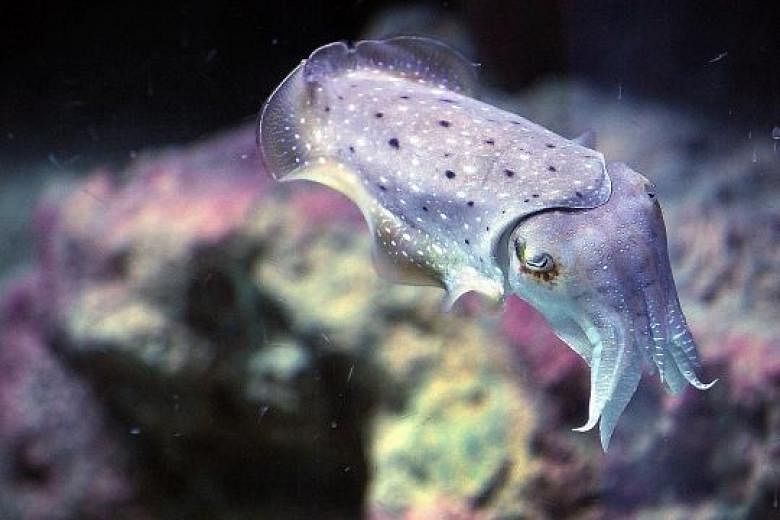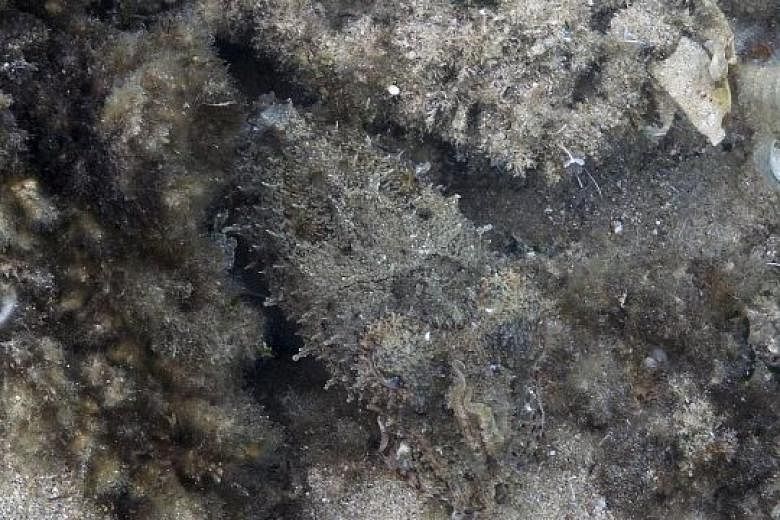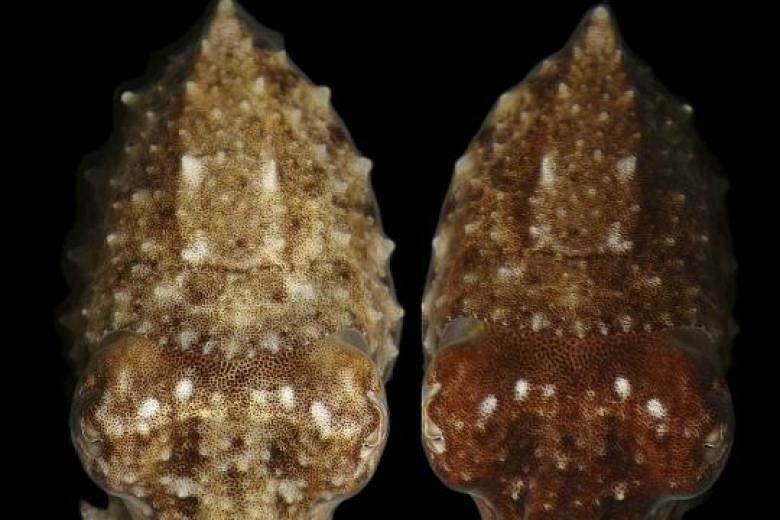Consider the cocktail umbrella. Like their larger counterparts, these wee things can be furled and unfurled easily. Once you tire of playing with them, you can lock them into the open position with a little latch before continuing to enjoy your drink.
Now imagine you have hundreds of cocktail umbrellas under your skin. This, it turns out, is fairly close to reality for cuttlefish, the sprightly relatives of squids and octopuses, new research shows.
Biologists at the University of Cambridge and the Marine Biological Laboratory in Woods Hole, Massachusetts, have discovered that cuttlefish, masters of camouflage whose shape-shifting talents have fascinated researchers for decades, can lock hundreds of tiny structures under their skin into an upright position, giving themselves a particular texture, then go on their way without expending any energy to keep up the look.
This is the first time anyone has seen anything like this in cuttlefish, a reminder that even much-studied species still have some surprising secrets.
Cuttlefish are the chameleons of the sea: Put one in front of a bank of seaweed and it will immediately activate a set of reflectors and coloured cells in the skin to match their background and fade from view.
What's more, they will mimic the texture of their environment using little nodules called papillae that they extend and retract using muscles. They can make themselves look like a cobbled seafloor, a spiny piece of coral or a hunk of granite.
"They're even clever enough that they'll put the posture of their arms to match things in their environment," said neurobiologist Trevor Wardill of the University of Cambridge, a contributor to the study published in the journal iScience. "If there's seaweed on a 45-degree angle, they'll set their arms to match." In the study, as part of an experiment to help understand how cuttlefish control their colour and shape, Dr Wardill's colleague, Dr Paloma Gonzalez-Bellido, snipped a nerve that controls one section of the cuttlefish's skin.
One of the two cuttlefish she used in the experiment, as expected, kept its skin smooth and could no longer change colour in the portion affected by the surgery, though it swam around healthily enough.
The other, however, had had its papillae extended at the moment the cut was made. To Dr Gonzalez-Bellido's surprise, they did not relax. Instead, as she perplexedly moved the animal to different water tanks and watched its unaffected side change shape and colour quite normally, the papillae stayed up. Only after an hour did they finally subside.
It turns out that these papillae can be locked in position if they are dosed with certain neurotransmitters, which that particular cuttlefish had likely just released when the nerve was cut.
The researchers believe that cuttlefish use this previously unknown locking mechanism to sustain their disguise as a piece of rock or coral without having to actually hold their muscles in the same posture for an extended period of time.
This is similar to a well-known phenomenon in clams and related creatures: When these molluscs want to clam up, they lock the muscles that open and close their shells by altering the chemistry of certain muscle proteins. In both cases, it seems that this approach can save energy for the animal, as it doesn't have to strain to maintain its pose.
Ultimately the study may help unlock the cuttlefish's other mysteries. If the researchers can decipher the individual neurons that control each of these papillae and understand better how this lock functions, it may lead to deeper insights into how these strange and beautiful creatures hide themselves in plain sight.
NYTIMES



